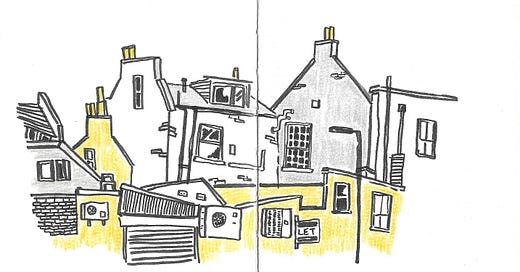Sometimes you need a bit of boredom to point you in the right direction. I love that urban sketching gets you to study the city for compositions, but I’ve come to realise I’m not interested in ‘aesthetic’ street scenes and architecture.
What I like is unplanned architecture: the incidental jumble of pipes, vents, wires, aerials, satellite dishes and other accessories.
I used to look out for ‘ready-made’ cute streets, but now I look up - can I see a mess of gutters and fire escapes, overlapping roofs or ventilation shafts? Let’s draw that.
As I honed in on the urban ‘jumble’, a joke from the movie Zoolander came to mind: a bad-taste fashion line with the appalling name of Derelicte. Of course, I now have a ‘Derelicte’ photo album.



Another challenge in urban sketching is finding the right scene at the right time: you have to physically explore the streets, find a place to sit, and hope you can frame the composition you want, based on what’s in front you.
I realised I would enjoy city sketching more if I had choice and control, so I painted more from photographs.
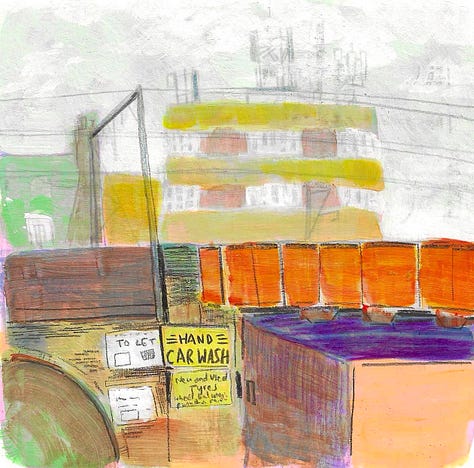
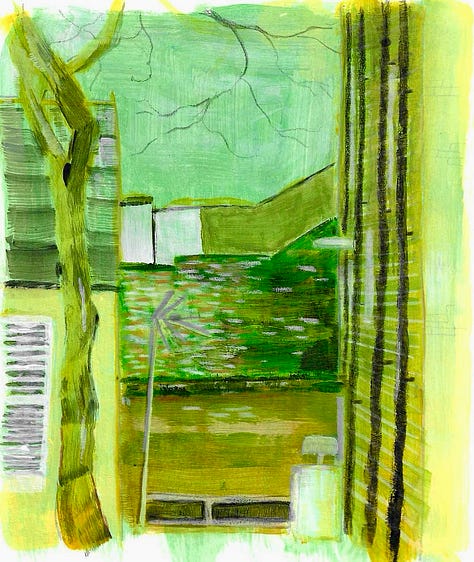
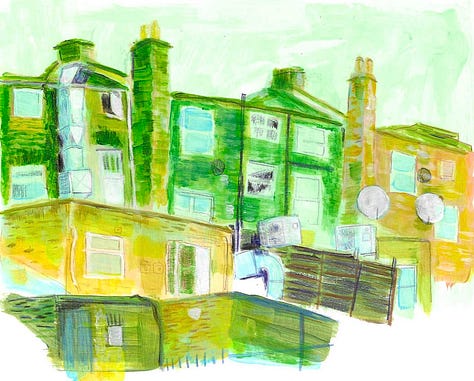
Painting at home meant I could easily use acrylics, which are flexible and bold; layering is easy and doesn’t require much planning (as opposed to watercolour).
I escaped the pressure of perspective with flat, layered compositions. I chose my own colour palettes, ignoring reality as needed. I loved the overall effect, which was a bit grubby and wonky but worked for me as illustration.
Oh, and I was 100% stealing from Egon Schiele!


At the end of 2023 I got to see the Egon Schiele collection at The Leopold Museum in Vienna. The museum has Schiele’s more famous portraits, as well as his town and city paintings. I love the moodiness of the cityscapes, as well as the dense layering, like collage.
In Schiele’s city portraits he changed buildings to his liking: he moved them, distorted and layered them. He painted his mother’s birthplace (Český Krumlov/Krumau) from memory, creating personal portraits rather than accurate studies.
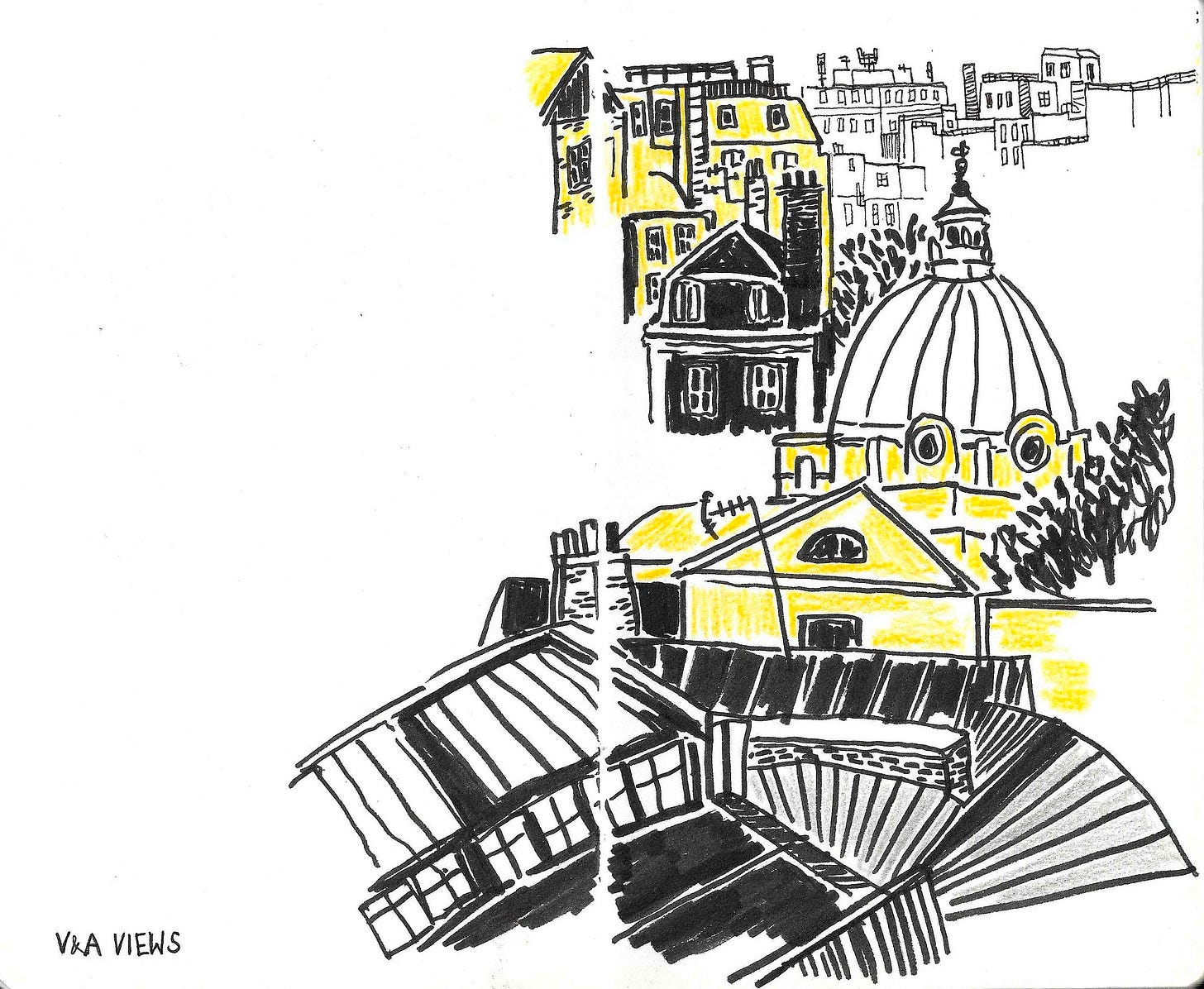
In 2024 I’ve been sketching more in pen and ink, giving me more time to focus on composition and to think about how to personalise my illustration. I took this style to my new ‘cityscape’ sketchbook (yes, my Derelicte sketchbook).
My city sketches are partly in person, partly from photographs, but that is just the starting point. I move windows, walls, roofs and chimney pots. I add extra fans and pipes and gutters.

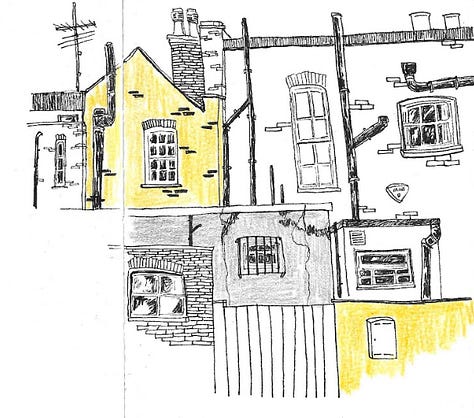

I don’t plan anything, I just pick up a pen and draw intuitively. It has been very freeing, and it feels like a genuinely personal project. Sticking to one theme also makes it easier to see what I like or don’t like about each sketch, and to carry those lessons to the next page. The mistakes are important!
It’s hard to draw London over and over again without thinking about its problems: it is an unaffordable place to live.
Sometimes with urban sketching, I feel like we’re all looking where we’re supposed to look; it’s as if we’re creating promotional artwork for a sanitised idea of the city, where a certain aesthetic goes hand-in-hand with gentrification.
I suppose that searching for run-down buildings to draw is its own kind of exploitation, like the point of the Derelicte joke in Zoolander. Am I really using the word tongue in cheek, or am I as bad as Mugatu?!
But you might be surprised to learn that the majority of my reference photos are of expensive flats that just look uncared for. Or perhaps they are uncared for, but there’s still some Z/Millennials inside being charged thousands of pounds a month.
Yay capitalism!

